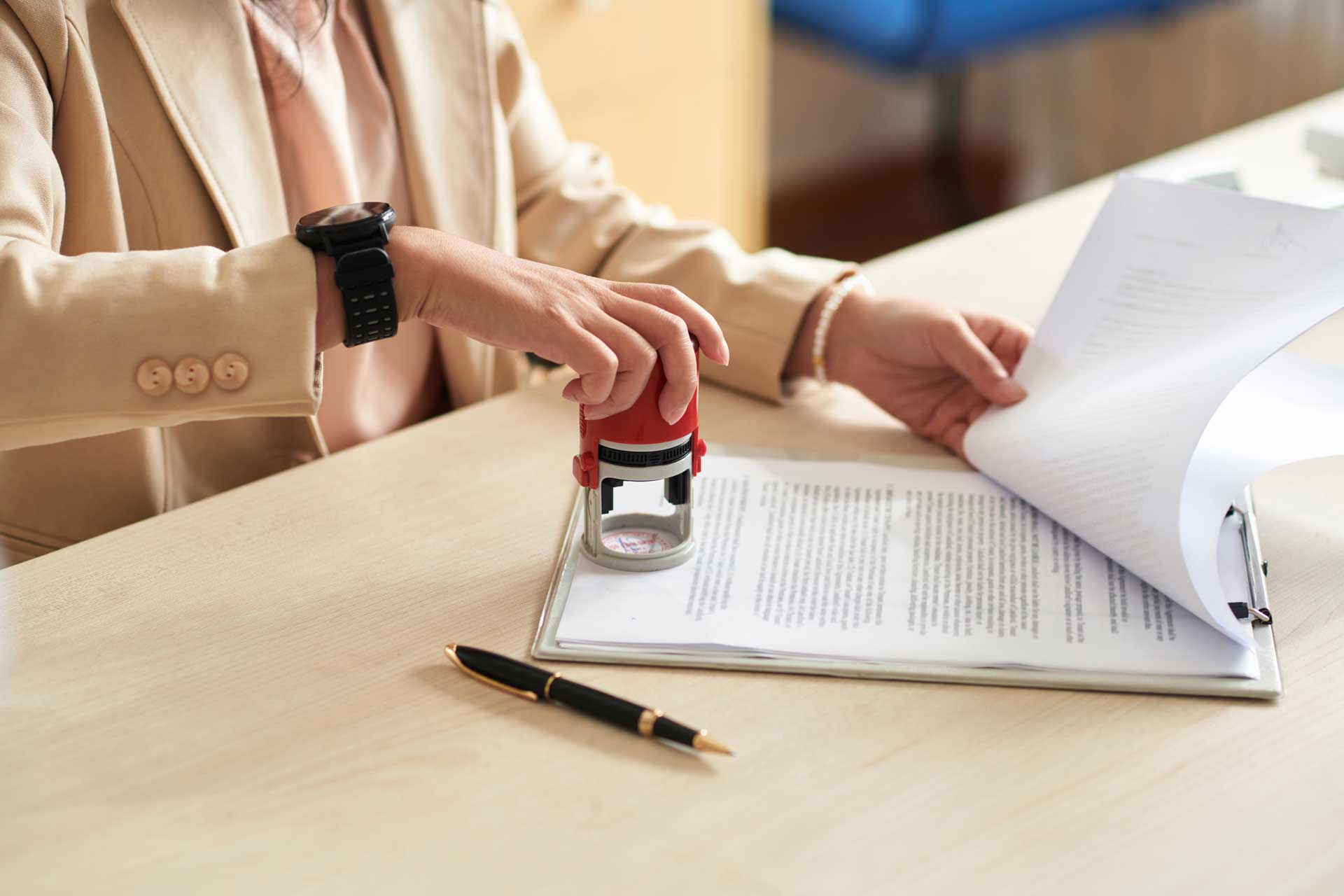How to Properly Notarize a Document: A Step-by-Step Guide
Table of Contents
Notarizing a document is crucial in ensuring the authenticity of signatures and preventing fraud in legal and financial matters. As a notary public, you verify the signer’s identity, witness the signature, and ensure all necessary details are in order. Whether you’re a new notary or have years of experience, properly notarizing a document requires careful attention to detail and adherence to state-specific laws.
This comprehensive guide will walk you through the essential steps to properly notarize a document, highlight common pitfalls to avoid, and explore state-specific regulations.
Verify the Identity of the Signer
One of the primary duties of a notary is to confirm the identity of the person signing the document. To do this effectively, the notary must examine a government-issued ID such as a driver’s license, passport, or another form of valid identification. The ID must be current and not expired and should include the signer’s photograph and signature.
In states like California and New York, additional verification steps, such as requiring a thumbprint, may be necessary for specific documents. This measure adds an extra layer of security to prevent fraudulent transactions. Ensure that the person signing the document appears before you and that their appearance matches the identification provided.
Best Practices for ID Verification:
- Ensure the government-issued ID is valid and current.
- Double-check that the person signing the contract matches the identification.
- Record the type of identification used, including the ID number and expiration date, in your notary journal.
Failing to properly verify the signer’s identity can lead to serious legal consequences and the invalidation of the notarization.
Confirm the Document Is Complete
Before proceeding with the notarization, it is essential to confirm that the signed document is complete. A notary should never notarize a document that contains blank spaces, as this can leave room for fraudulent changes after the fact. Review the document thoroughly to ensure that all information is filled in and no crucial details are missing.
If a document has blanks meant to be filled in later, advise the signer to complete the document before notarization. In states like Florida, notaries are prohibited from notarizing incomplete documents, and failing to adhere to this regulation can result in penalties or revocation of your notary commission.
Witness the Signing of the Document
The next step in notarizing a document is to witness the actual signing. The notary must be physically present during the signing, which is critical to ensuring the document’s authenticity. Remote online notarization (RON) is permitted in some states, like Florida and Texas. Still, even in those cases, the notary must witness the signing via video conferencing software that complies with state regulations.
If a signer appears after the document has been signed, do not proceed with notarizing. Instead, ask the signer to sign the document in your presence.
Guidelines for Witnessing the Signing:
- The signer must be present at the time of notarization.
- Remote notarizations require video conference technology that meets state requirements.
- If the signer has already signed, ask them to re-sign in your presence.
Administer Any Necessary Oaths or Affirmations
Sometimes, the notarization process may involve administering an oath or affirmation. This step is commonly required for affidavits and sworn statements. The notary must ensure that the signer understands the significance of the oath, which involves swearing or affirming that the information in the document is accurate.
Each state has its own rules for administering oaths. For example, California and Texas have specific wording that must be used, and failing to administer the oath correctly can invalidate the notarization. If the document requires an oath or affirmation, always check your state’s notary handbook to ensure you follow the procedure.
Complete the Notarial Certificate
Once the document has been signed and any necessary oaths have been administered, the notary must complete the notarial certificate. This section includes essential details such as:
- The notary’s signature.
- The notary’s seal or stamp.
- The date of notarization.
- Specific wording or certificates required by the state (e.g., acknowledgment or jurat).
Make sure that the notarial certificate is filled out completely and accurately. Missing information, such as the date or notary seal, can invalidate the entire document. In states like California, the notary’s seal must be legible, and its placement on the document should not obscure any text.
Components of a Properly Completed Notarial Certificate:
- Notary’s signature and printed name.
- Date and location of the notarization.
- A notary stamp or seal that is clear and legible is needed.
- Any required wording (e.g., “acknowledged before me”).
Read More: How to Handle a Power of Attorney Notarization
Record the Notarial Act in Your Journal
Maintaining a notary journal is a best practice and, in some states, a legal requirement. A well-maintained journal records all notarizations and can protect you in legal disputes or misconduct allegations. California and Texas require notaries to keep a journal, while states like Florida recommend it as a safeguard.
In your journal, include the following details:
- Date and type of notarization.
- The name of the signer.
- The type of document being notarized.
- The identification method used.
- The notary fee is charged (if applicable).
Recording this information helps ensure transparency and accountability, which can be critical if your actions are later questioned in a legal setting.
Affix Your Notary Seal or Stamp
The final step in notarizing a document is affixing your notary seal or stamp. This seal serves as official confirmation that you have performed the notarization, and it must meet the specific requirements set by your state.
In most states, the notary’s seal must include the following information:
- The notary’s full name.
- The state in which the notary is commissioned.
- The notary’s commission expiration date.
- The notary’s commission number.
Ensure that the seal is clear, legible, and placed in a location that does not obscure any document part. A smudged or improperly placed seal can render the notarization invalid, so always double-check before submitting the document.
Common Mistakes to Avoid
Even experienced notaries can make mistakes that compromise the legality of their notarizations. Some common errors to avoid include:
- Failing to Verify Identification Properly: Always require a valid government-issued ID and double-check that the signer matches the identification.
- Not Completing the Notarial Certificate: Ensure that every required field, including the date, signature, and seal, is filled out correctly.
- Not Witnessing the Signing: Never notarize a document unless the signer is present when signing.
- Administering an Incorrect Oath: Ensure you follow state-specific guidelines for administering oaths and affirmations.
- Using an Expired Seal: Ensure your notary seal is valid and current before notarizing any documents.
By avoiding these common mistakes, notaries can maintain their professional reputation and protect themselves from potential legal consequences.
State-Specific Notarization Requirements
Each state has its regulations governing the notarial process. For example:
- California requires notaries to record thumbprints for documents like real estate deeds.
- Florida has embraced Remote Online Notarization (RON), allowing notaries to perform notarizations remotely with approved technology.
- Texas mandates specific wording for oaths and affirmations, which must be followed precisely to maintain the notarization’s validity.
Before proceeding with any notarization, familiarize yourself with your state’s requirements by consulting your state’s notary handbook or a professional notary association.
Protecting Yourself as a Notary
Notarizing documents comes with significant responsibility. In addition to following proper procedures, notaries can protect themselves by investing in Errors and Omissions (E&O) insurance, which covers legal fees and damages in case of a mistake or allegation of misconduct.
Maintaining meticulous records in a notary journal, staying updated on changes in state laws, and regularly attending training sessions are all ways to protect your notary commission and reputation.
Key Takeaways
Click here to download our step-by-step infographic on the steps to notarize a document!
Properly notarizing a document is a step-by-step process that requires precision, attention to detail, and adherence to state-specific laws. By following these guidelines, notaries can ensure they meet the highest professional standards, safeguard the integrity of notarized documents, and protect themselves from legal liability.
Whether notarizing a simple signature or handling more complex legal documents, staying informed and diligent is critical to serving the public effectively. For additional resources on notary best practices, visit Notary Public Association Resources for guidance tailored to your state’s requirements.
Share:
Disclaimer: All information provided by Notary Public Association is for educational purposes only and is not intended as legal advice. Notary Public Association makes no representations or warranties as to the accuracy, completeness, or applicability of the information provided and assumes no liability for any actions taken in reliance on it. Always consult a licensed attorney or your local commissioning authority for guidance specific to your notary responsibilities and jurisdiction.
Related Posts

Necessary Requirements to Become a Notary
Dive into the journey of becoming a notary: understand eligibility, training, bonding, and application steps. A guide to kickstart your notary career.

California Notary Training: What to Expect
Learn what to expect from CA Notary Training: eligibility, course details, and exam prep for a successful notary career in the Golden State.

